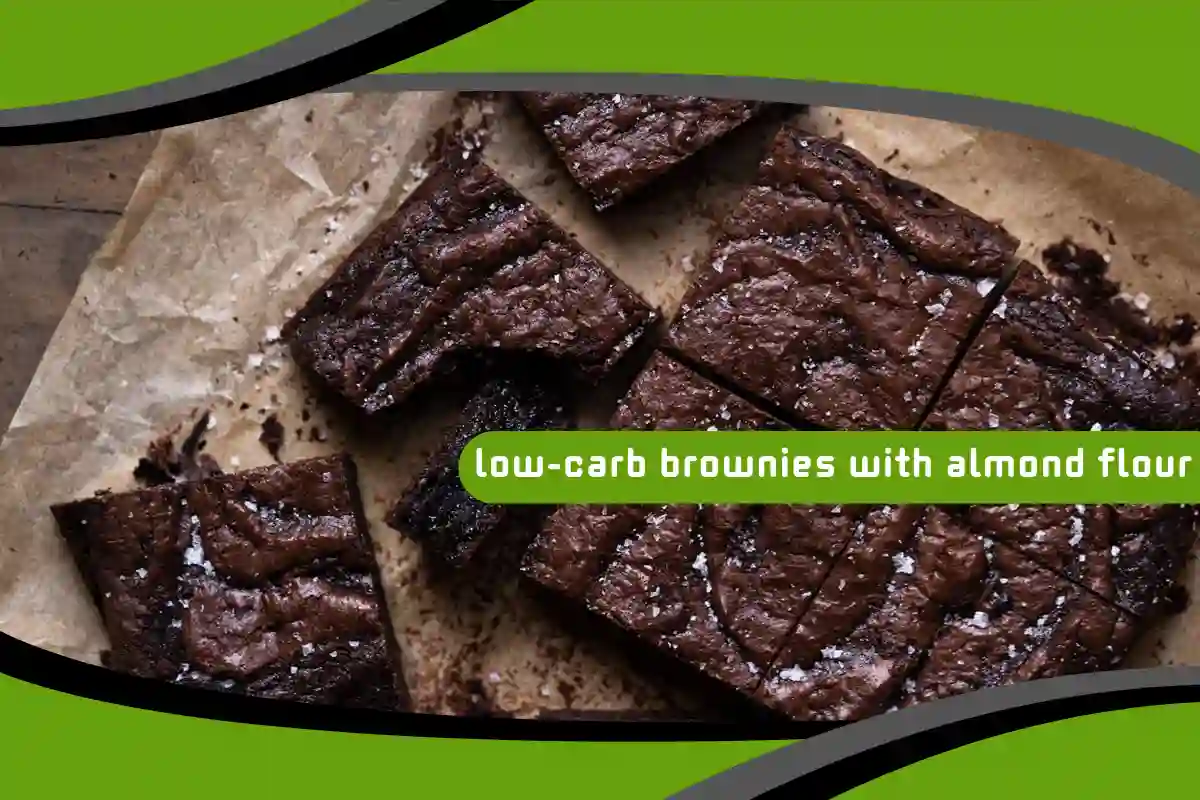In a world where sugar dominates the dessert aisle, the rise of low-carb alternatives has revolutionized the way we enjoy sweet treats. Among the most beloved comfort foods is the brownie—rich, chocolatey, and decadently satisfying. But traditional brownies are often loaded with refined flour and sugar, making them incompatible with low-carb or ketogenic lifestyles. Enter the Low-Carb Brownie with Almond Flour: a modern take on a classic dessert that satisfies cravings while keeping your blood sugar and carb intake in check. For those who want indulgence without compromise, this dessert is a game-changer.

The Power of Almond Flour: A Smart Swap for Better Nutrition
Almond flour isn’t just a gluten-free alternative—it’s a nutritional upgrade. Made from finely ground blanched almonds, it’s packed with healthy fats, vitamin E, magnesium, and plant-based protein. Its low glycemic index makes it an ideal flour substitute for low-carb and diabetic-friendly recipes. When used in brownies, almond flour contributes a moist texture and slightly nutty flavor that pairs perfectly with rich cocoa or dark chocolate. Compared to refined white flour, almond flour contains significantly fewer net carbs, making it the smart choice for anyone seeking better blood sugar control without sacrificing taste or texture.
What Makes a Brownie “Low-Carb”?
Not all “low-carb” desserts are created equal. A truly low-carb brownie must avoid high-glycemic sweeteners, starches, and traditional flours. The best recipes rely on low-glycemic sweeteners like erythritol, stevia, or monk fruit, along with fat-rich bases like butter, coconut oil, or almond butter. Using almond flour instead of wheat flour eliminates gluten and slashes the carb content. To truly qualify as low-carb, each brownie should have fewer than 5–6 net grams of carbohydrates. Additionally, using unsweetened cocoa powder or 85%+ dark chocolate helps deepen flavor without spiking blood sugar—essential for those following keto, diabetic, or paleo protocols.
Watch also: The Perfect Bite: Keto Peanut Butter Fat Bombs That Balance Taste and Nutrition
The Role of Healthy Fats and Sweeteners
Low-carb brownies are rich not just in chocolate, but in healthy fats that keep you satiated and energized. Butter, ghee, coconut oil, or avocado oil are commonly used to provide that fudgy mouthfeel while supporting metabolic health. These fats slow digestion, stabilize blood sugar, and help absorb fat-soluble vitamins. When it comes to sweeteners, natural zero-calorie options like monk fruit or erythritol are preferred because they don’t raise insulin levels or cause gastrointestinal distress when used in moderate amounts. The result is a brownie that tastes indulgent but works with your body’s metabolic goals, not against them.
Texture Matters: How to Achieve Fudgy vs. Cakey Brownies
One of the great debates in the brownie world: fudgy or cakey? Luckily, both are achievable with almond flour—you just need the right balance. For a fudgy texture, increase the fat content and reduce the baking time slightly. Using melted butter or coconut oil, along with a high cocoa-to-flour ratio, leads to that dense, rich bite. For a cakier brownie, use a bit more almond flour and an extra egg for lift. Either way, almond flour’s moisture-retaining properties ensure the final product stays soft and satisfying, unlike some low-carb treats that turn out dry or crumbly.
Watch also: Keto Breakfast Casserole with Bacon and Cheese – Easy, Low-Carb, and Delicious!
Optional Add-Ins: Boost Flavor and Nutrition
Low-carb brownies with almond flour are a great base for delicious, nutrient-rich add-ins. Chopped walnuts, pecans, or macadamia nuts add crunch and omega-3 fatty acids. Swirling in sugar-free peanut butter or almond butter enhances the richness and boosts protein. Unsweetened shredded coconut, chia seeds, or a handful of sugar-free dark chocolate chips can elevate both taste and nutritional profile. For a fresh twist, a few raspberries or a dash of orange zest can bring brightness and contrast to the deep chocolate flavor. Every addition should align with your dietary goals while enhancing the indulgent experience.
Portion Control and Serving Tips
Even though low-carb brownies are healthier, moderation still matters. These brownies are energy-dense due to the combination of fats and almond flour, and while low in carbs, they can still pack 150–250 calories per serving depending on size and ingredients. For best results, cut them into smaller squares and enjoy one as a mid-afternoon pick-me-up or post-meal treat. They pair wonderfully with black coffee, keto-friendly ice cream, or a dollop of unsweetened whipped cream. Serve them chilled for a firmer texture, or warm for extra gooeyness. The key is balance—enjoy, but don’t overindulge.
Meal Prep Friendly: A Freezer Staple You’ll Love
Low-carb almond flour brownies aren’t just delicious—they’re also meal prep heroes. Make a batch on the weekend, store them in an airtight container, and you’ve got a satisfying snack or dessert for the entire week. Better still, they freeze beautifully. Place individual brownies in parchment paper and freeze in zip-top bags. When you’re ready to enjoy, just thaw one at room temperature or microwave it for 10–15 seconds. Having a freezer stash of low-carb treats makes it much easier to stay on track and avoid high-sugar temptations during busy or stressful days.
Health Benefits Beyond Weight Management
Low-carb brownies don’t just help with weight loss—they support broader metabolic and cognitive health. Stable blood sugar levels mean fewer energy crashes and better mood stability. The vitamin E and magnesium in almond flour support heart and brain health, while healthy fats promote hormone regulation and cellular repair. The flavonoids in dark chocolate and cocoa powder have antioxidant properties and may improve vascular function. When made correctly, these brownies offer functional nutrition benefits that far exceed what you’d get from a conventional dessert—transforming a cheat meal into a smart, health-promoting choice.
Mistakes to Avoid When Baking with Almond Flour
Baking with almond flour is different from traditional flour, and a few key tips can make or break your brownies. First, do not pack almond flour tightly—always spoon and level it to avoid dryness. Second, don’t overmix the batter, which can lead to a dense texture. Use room-temperature eggs to prevent curdling when mixing with melted fats. Avoid overbaking, as almond flour browns faster than wheat flour. Finally, always allow brownies to cool completely before slicing—this ensures clean edges and perfect structure. Understanding these nuances ensures a consistent, bakery-quality result every time.
Conclusion: A Delicious, Healthier Way to Indulge
Low-carb brownies made with almond flour prove that dessert and discipline can coexist. They offer a guilt-free, blood sugar-friendly way to enjoy rich chocolate flavor without the crash of traditional baked goods. Whether you’re following a ketogenic diet, managing diabetes, or simply looking for healthier indulgences, these brownies fit the bill. With the right ingredients, proper technique, and thoughtful additions, you can turn a classic comfort food into a nutrient-dense, satisfying, and sustainable treat. As a nutrition expert, I strongly advocate for recipes like this—where flavor meets function in every bite.
Watch also: From Craving to Ketosis: Why These Cheesecake Cups Are a Game-Changer



No comment